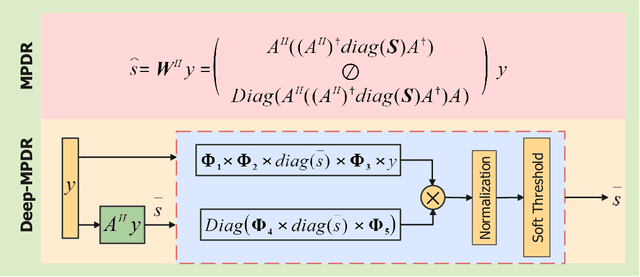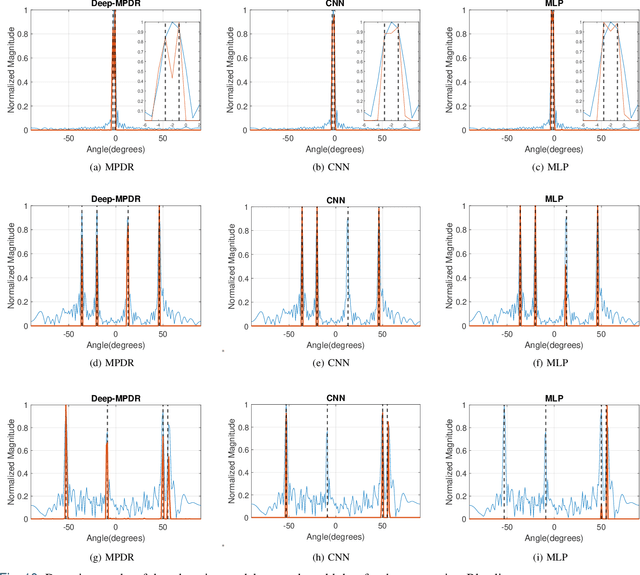Interpretable and Efficient Beamforming-Based Deep Learning for Single Snapshot DOA Estimation
Paper and Code
Sep 14, 2023



We introduce an interpretable deep learning approach for direction of arrival (DOA) estimation with a single snapshot. Classical subspace-based methods like MUSIC and ESPRIT use spatial smoothing on uniform linear arrays for single snapshot DOA estimation but face drawbacks in reduced array aperture and inapplicability to sparse arrays. Single-snapshot methods such as compressive sensing and iterative adaptation approach (IAA) encounter challenges with high computational costs and slow convergence, hampering real-time use. Recent deep learning DOA methods offer promising accuracy and speed. However, the practical deployment of deep networks is hindered by their black-box nature. To address this, we propose a deep-MPDR network translating minimum power distortionless response (MPDR)-type beamformer into deep learning, enhancing generalization and efficiency. Comprehensive experiments conducted using both simulated and real-world datasets substantiate its dominance in terms of inference time and accuracy in comparison to conventional methods. Moreover, it excels in terms of efficiency, generalizability, and interpretability when contrasted with other deep learning DOA estimation networks.
 Add to Chrome
Add to Chrome Add to Firefox
Add to Firefox Add to Edge
Add to Edge